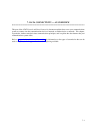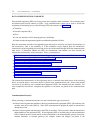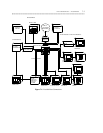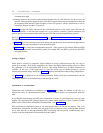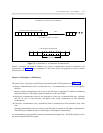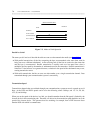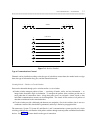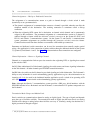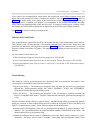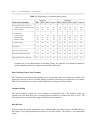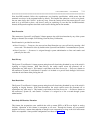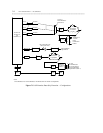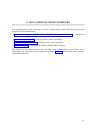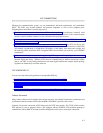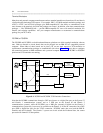DATA CONNECTIVITY — AN OVERVIEW 7-9
_ ______________________________________________________________________________________
_ ______________________________________________________________________________________
_ ______________________________________________________________________________________
At the point in the communications stream where the transmission mode changes between analog and
digital the switch automatically inserts a modem pool member. (See the Transmission States section of
chapter 1 for further details on the points in the transmissions stream where transitions from analog to
digital may occur.) A modem pool member is an arrangement of data modules and modems that takes
analog signals and transforms them to DCP and vice versa. It consists of an analog port, a modem, a DCP
data module, and a DCP (GPP on the S85/G2 or digital-line on the S75/G1) port arranged in tandem.
See chapter 8 for specific modem pool configurations.
SPECIAL DATA FEATURES
Your communications system offers the DTEs you connect through it some standard data service features.
These include: a data call setup through a voice terminal, terminal dialing, data hot line, data privacy, data
protection, data restriction, data off-premises extension. Table 7-1 shows the communications systems and
releases on which each feature is available. The remainder of this chapter provides an overview of these
features.
For more details on these features, see:
• The switch features chapter of Data Switching Applications, 555-035-002
• DEFINITY Communications System, Generic 2 and System 85, Feature Descriptions, (555-104-301)
• DEFINITY Communications System, Generic 1 and System 75 and System 75 XE, Feature Descriptions,
(555-200-201)
Terminal Dialing
This feature lets users set up and disconnect data calls directly from an asynchronous data terminal. Users
can use either of two methods to dial from their terminals:
• Break signal dialing — The incoming port recognizes a new call when the user alerts it by pressing the
BREAK key. Switch-generated prompts, like "DIAL," "RINGING," "WAIT," and "ANSWERED,"
guide the user through the keyboard-dialing session.
• Hayes-AT dialing — The incoming port recognizes a new call through a particular command the
Hayes-AT compatible DCE sends it. The DCE, rather than the switch port, guides the user through call
set-up.
The basic terminal dialing offering is numeric dialing. Default terminal dialing and mnemonic terminal
dialing are variations of basic terminal dialing that are available on the System 85 (R2V3 and R2V4) and
Generic 2 communications systems. These variations require switch administration.
• Default terminal dialing places a data call to a predesignated data endpoint by simply entering a "null"
character. For a given data module, the default destination number is administered on the switch. The
default number can be up 20 characters long.
• Mnemonic dialing lets the user enter an alphanumeric code, rather than a numeric extension, to reach a
destination. This allows users to enter a computer’s name rather than the telephone number of the



